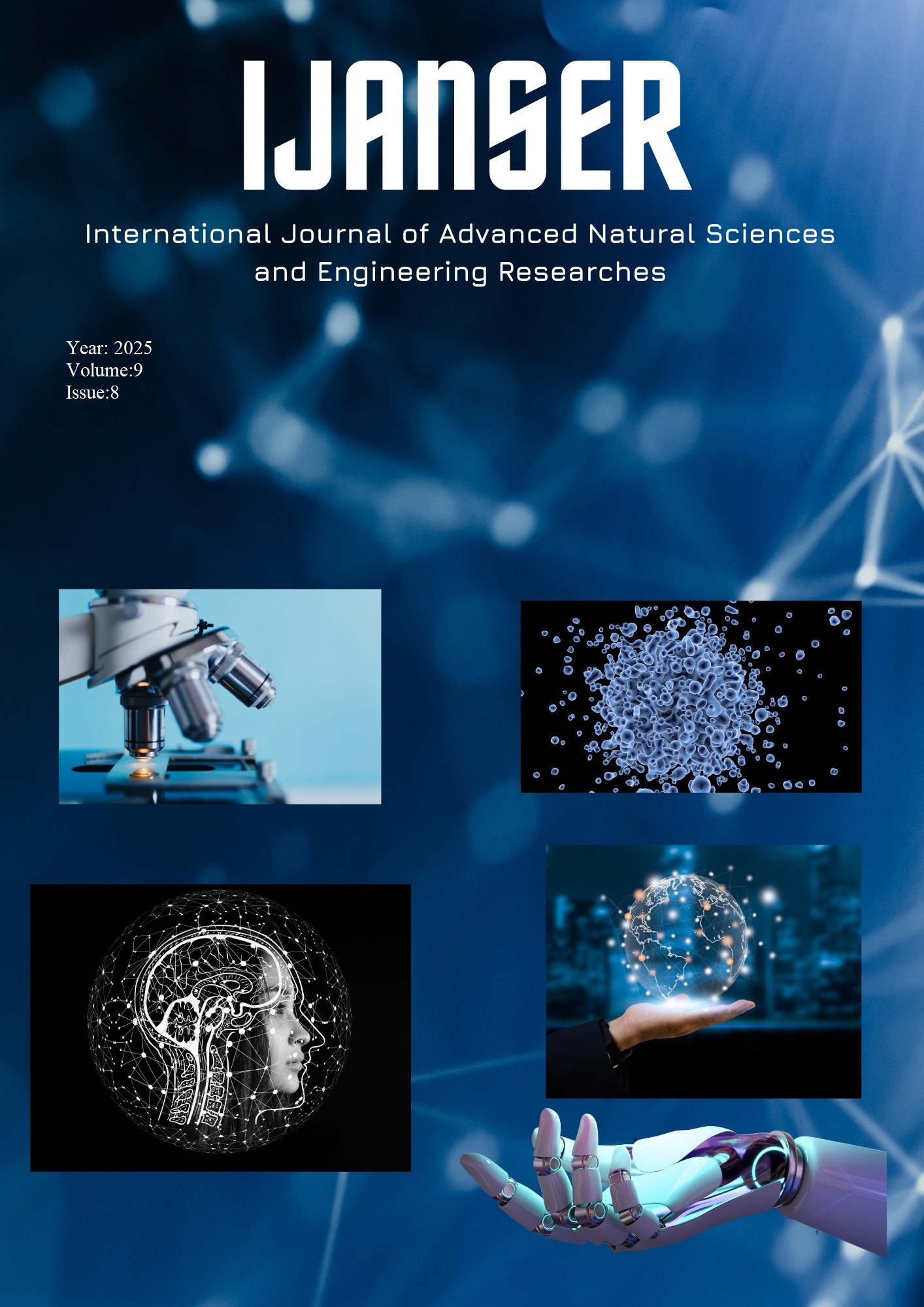Energy Infrastructure-Based Fire Risk: The Impact of Electric Transmission Lines on Forest Ecosystems and Social Policy with Prevention Strategies
Keywords:
Forest Fires, Electricity Transmission Lines, Energy Infrastructure, Social Policy, Disaster ManagementAbstract
In recent years, the rising frequency and intensity of forest fires globally have been driven not
only by climate change-related natural factors but also by human-induced infrastructure vulnerabilities.
Among the most at-risk areas are forested and rural regions intersected by power transmission lines. In
arid, windy, and low-humidity environments, technical issues such as poor maintenance, equipment
failure, inadequate insulation, or collapsed poles can generate sparks that ignite fires. These fires
endanger ecosystems and also disrupt livelihoods, essential services, and social well-being in affected
communities. This study investigates the relationship between energy transmission infrastructure and
forest fires from an integrated perspective encompassing engineering, environmental safety, and social
policy. Numerous international incidents, particularly in countries like the USA and Australia, highlight
faulty power infrastructure as a critical cause of large-scale fires. Accordingly, such fires should be
regarded not only as environmental disasters but also as technological and social crises. To mitigate these
risks, the study proposes several technical strategies: routine and autonomous inspection of power lines
via unmanned aerial vehicles (UAVs); early fault detection using thermal imaging technologies at cables
and connectors; creation of protective zones of at least 10 meters along power line routes; and
deployment of AI-powered spark detection sensors and smart grids equipped with fast-acting circuit
breakers. The study also explores the broader impacts of power outages during wildfires. These outages
can severely hinder emergency response capabilities, disrupt communication systems and healthcare
services, and destabilize supply chains for food and basic needs. Such disruptions tend to exacerbate
social inequalities, particularly in rural areas marked by high vulnerability. In conclusion, forest fires
represent a complex interplay between environmental risks, infrastructure safety, and social resilience.
Managing these risks effectively requires a multidisciplinary approach that incorporates disaster risk
reduction, rural development, and climate justice-oriented social policies. Key priorities should include
continuous monitoring of energy infrastructure, legal enforcement of maintenance responsibilities, and
targeted infrastructure investment in socially disadvantaged regions to ensure sustainable disaster
preparedness and response.
Downloads
References
Luo, M., Xie, W., Li, D., & Wan, T. L. (2024). The rising threat of wildfire: An examination of global forest fire occurrence over the past two decades. International Forestry Review, 26(2), 224-233.
Jones, M. W., Kelley, D. I., Burton, C. A., Di Giuseppe, F., Barbosa, M. L. F., Brambleby, E., ... & Xanthopoulos, G. (2024). State of wildfires 2023–2024. Earth System Science Data, 16(8), 3601-3685.
Safi, L., Mujeeb, M., Sahak, K., Mushwani, H., & Hashmi, S. K. (2024). Climate change impacts and threats on basic livelihood resources, food security and social stability in Afghanistan. GeoJournal, 89(2), 85.
Meng, L., O’Hehir, J., Gao, J., Peters, S., & Hay, A. (2024). A theoretical framework for improved fire suppression by linking management models with smart early fire detection and suppression technologies. Journal of Forestry Research, 35(1), 86.
Vaiciulyte, S., Underhill, H., & Reddy, E. (2024). Assembling fire: beyond engineering solutions. Disaster Prevention and Management: An International Journal, 33(3), 237-249.
Nicolini, E. (2024). Urban Safety—Socio-Technical Solutions for Urban Infrastructure: Case Studies. Buildings 2024, 14, 1754.
Pausas, J. G., & Keeley, J. E. (2021). Wildfires and global change. Frontiers in Ecology and the Environment, 19(7), 387-395.
Odimayomi, T. O., Proctor, C. R., Wang, Q. E., Sabbaghi, A., Peterson, K. S., Yu, D. J., ... & Whelton, A. J. (2021). Water safety attitudes, risk perception, experiences, and education for households impacted by the 2018 Camp Fire, California. Natural Hazards, 108(1), 947-975.
Li, X., & Lin, Y. (2019). Do high-voltage power transmission lines affect forest landscape and vegetation growth: Evidence from a case for Southeastern of China. Forests, 10(2), 162.
Vahedi, S., Zhao, J., Pierre, B., Lei, F., Anagnostou, E., He, K., ... & Wang, B. (2025). Wildfire and power grid nexus in a changing climate. Nature Reviews Electrical Engineering, 1-19.
Jazebi, S., De Leon, F., & Nelson, A. (2019). Review of wildfire management techniques—Part II: Urgent call for investment in research and development of preventative solutions. IEEE Transactions on Power Delivery, 35(1), 440-450.
Luo, Y., Yu, X., Yang, D., & Zhou, B. (2023). A survey of intelligent transmission line inspection based on unmanned aerial vehicle. Artificial Intelligence Review, 56(1), 173-201.
Tierney, K. (2006). Social inequality, hazards, and disasters. On risk and disaster: Lessons from Hurricane Katrina, 2(1), 109-128.
Spielman, S. E., Tuccillo, J., Folch, D. C., Schweikert, A., Davies, R., Wood, N., & Tate, E. (2020). Evaluating social vulnerability indicators: criteria and their application to the Social Vulnerability Index. Natural hazards, 100(1), 417-436.
McCauley, D., & Heffron, R. (2018). Just transition: Integrating climate, energy and environmental justice. Energy policy, 119, 1-7.
Avcı, M., & Korkmaz, M. (2021). Türkiye’de orman yangını sorunu: Güncel bazı konular üzerine değerlendirmeler. Turkish Journal of Forestry, 22(3), 229-240.
Brewer, M. J., & Clements, C. B. (2019). The 2018 Camp Fire: Meteorological analysis using in situ observations and numerical simulations. Atmosphere, 11(1), 47.
Rooney, B., Wang, Y., Jiang, J. H., Zhao, B., Zeng, Z. C., & Seinfeld, J. H. (2020). Air quality impact of the Northern California camp fire of November 2018. Atmospheric Chemistry and Physics, 20(23), 14597-14616.
Whittaker, J., Haynes, K., Handmer, J., & McLennan, J. (2013). Community safety during the 2009 Australian ‘Black Saturday’bushfires: an analysis of household preparedness and response. International journal of wildland fire, 22(6), 841-849.
Cameron, P. A., Mitra, B., Fitzgerald, M., Scheinkestel, C. D., Stripp, A., Batey, C., ... & Cleland, H. (2009). Black Saturday: the immediate impact of the February 2009 bushfires in Victoria, Australia. Medical Journal of Australia, 191(1), 11-16.
Tariq, S., ul‐Haq, Z., Mariam, A., Mehmood, U., & Ahmed, W. (2023). Assessment of air quality during worst wildfires in Mugla and Antalya regions of Turkey. Natural Hazards, 115(2), 1235-1254.
Alkın, R. C. (2022). Ateş, su ve sosyoloji: Türkiye’de 2021 yazında meydana gelen orman yangınları ve seller üzerine bir afet sosyolojisi analizi. Tezkire, 31, 73-85.





